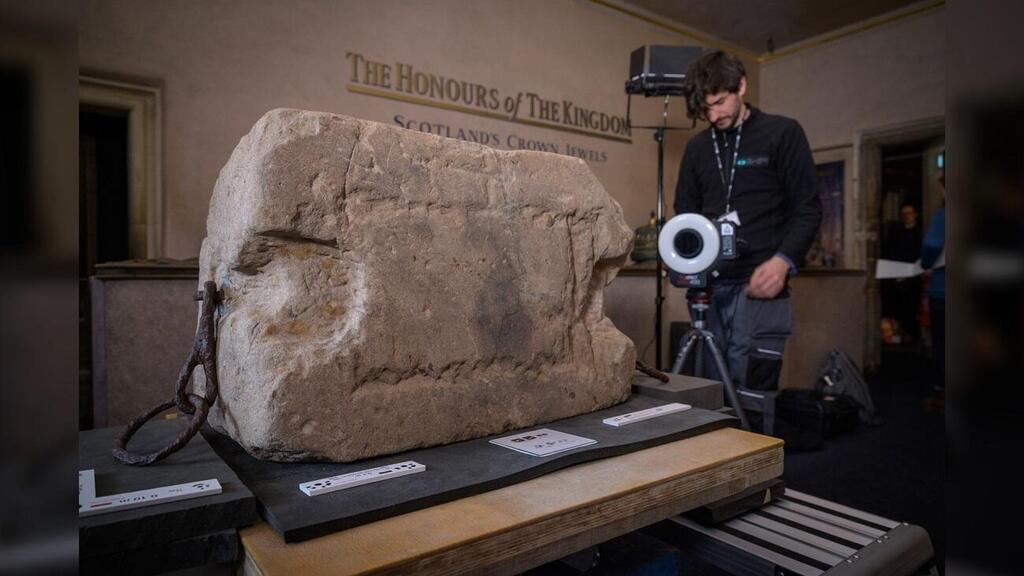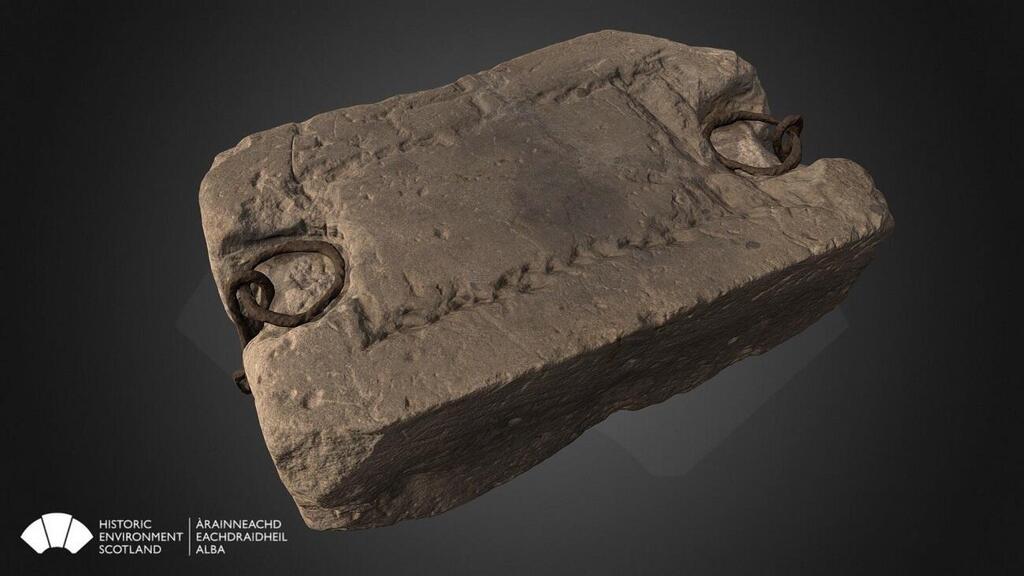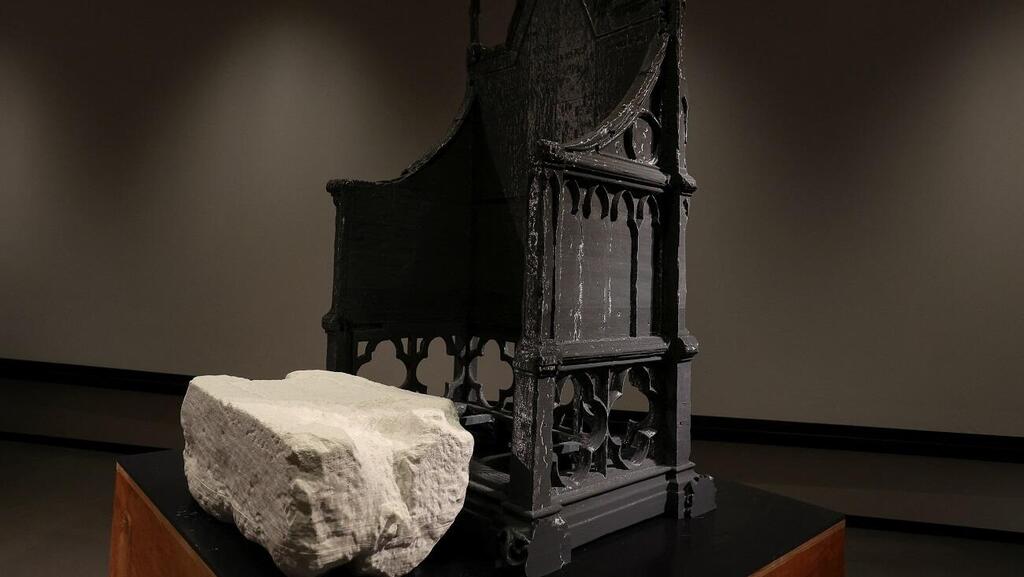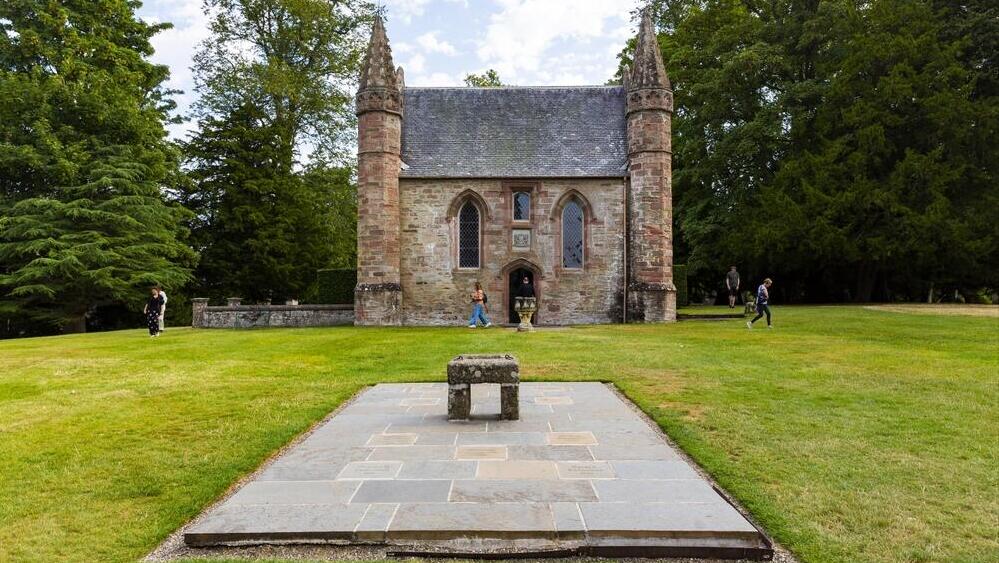A recent reexamination of the Stone of Scone - also known as the Stone of Destiny or Coronation Stone - from the 9th century, revealed mysterious markings that had not been discovered before, including evidence of the origin of the stone that was used in the coronation of Scottish monarchs, and is currently used in the coronation of English monarchs.
More stories:
Advanced digital technologies and scientific analysis have revealed more of the story of the Stone of Destiny, which was formerly kept at Scone Abbey in Perthshire, Scotland, and used as the coronation stone of Scottish kings since 847.
It was transferred to the Palace of Westminster in 1296 for use as the coronation stone of the kings of England and the United Kingdom, and ultimately returned to Scotland in 1996 where it is now displayed at Edinburgh Castle, with a replica located near its original location next to Scone Palace.
Now, in preparation for the coronation ceremony of King Charles III, the original stone has been returned to Westminster Palace – also known as the Houses of Parliament, located on the banks of the River Thames in the Westminster quarter of London.
The move is in accordance with a decision made by the United Kingdom government in 1996 that the stone would be kept in Scotland but brought to Westminster Palace for coronation ceremonies, such as the upcoming one. The stone is customarily inserted into the base of an oak chair known as St. Edward's chair, on which all the kings of England, Great Britain and the United Kingdom were crowned except for Mary II.
Despite the stone's old age, Historic Environment Scotland (HES) – a public body in Scotland responsible for researching, conserving and promoting Scotland's history – detected in tests carried out at the National Center for Building Preservation in Scotland that there are several mysterious markings on the historic sandstone known as the Stone of Destiny.
A digital model of the stone in three dimensions was created, allowing it to be examined from various points of view in greater detail than ever before. This innovative model revealed the previously undocumented marks resembling Roman numerals on the stone.
The digital imaging also improved the visibility of the stone's geological features, such as its cross-stratification, which indicates the geological conditions under which the sandstone was formed.
Additionally, it is now possible to see more clearly the numerous tool marks on its upper surface, as well as the markings indicating its repair in 1950 when, on Christmas Day of that year, four Scottish students broke into Westminster Abbey and stole the stone with the intention of returning it to Scotland.
During the theft, the stone was broken into two pieces, and the students hid the larger piece in a field for several weeks before traveling with it to Scotland, while the smaller piece was left behind and later recovered by authorities. After its recovery, the stone was repaired and returned to Westminster Abbey.
"It is very exciting to discover new information about a unique and important object for the history of Scotland such as the Stone of Destiny. The discovery of previously undocumented markings is significant nonetheless, although at this stage we cannot say with certainty what the purpose or meaning is of the Roman numeral-like symbols (three Xs and a W).
However, they offer an exciting opportunity for further research in the future," said Dr. Ewan Hyslop, Head of Research and Climate Change Adaptation at Historic Environment Scotland.
The new analysis provided further evidence of the stone's origins. An X-ray fluorescence (XRF) analysis – a non-destructive technique that measures the chemical composition of materials such as rocks, minerals and ores – was used to determine the basic components of the stone, which led to the discovery of traces of a copper alloy on the upper surface of the stone, indicating that a bronze or brass object had come into contact with or been placed on the stone at some point in its history.
In addition, microscopic traces of gypsum plaster were found filling various cavities around the sandstone, suggesting that at some stage the stone was cast in plaster, although there is no evidence yet of a copy of the stone being made in this way.
The Stone of Destiny will be included in this weekend's coronation ceremony of King Charles III, where it will be placed within the coronation chair before being returned to Scotland.
A 3D digital model of the Stone of Destiny is available for viewing on the Sketchfab website, both for researchers and the general public. The availability of the online model allows everyone to easily examine part of the evidence and witness the historic stone, which despite its many years will not be the oldest item in the coronation ceremony.
That honor belongs to the anointing spoon, which dates back to the early 12th century and will be used to anoint King Charles III with oil during the ceremony.
First published: 23:32, 05.01.23





